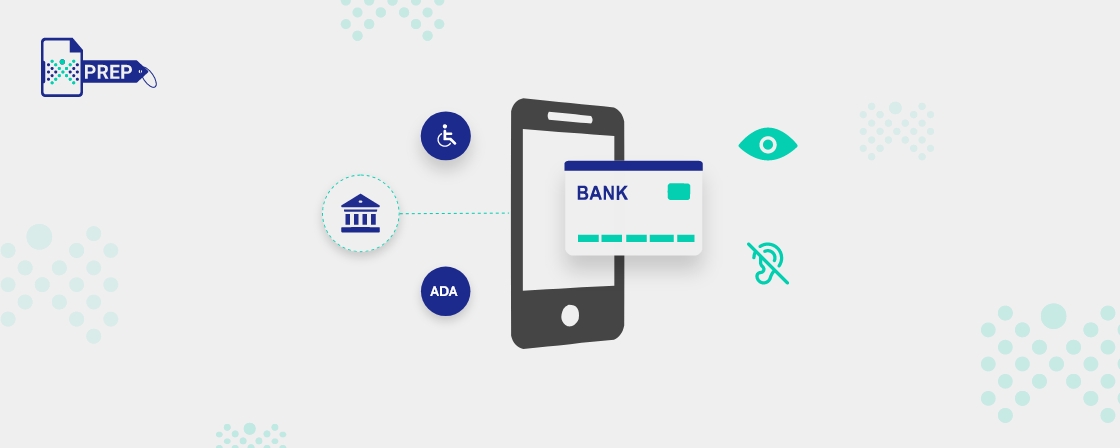Key Takeaways
- ADA compliance in digital banking is crucial to ensure accessibility for all customers, including those with disabilities.
- Banks must meet ADA website and mobile app requirements, including providing alternative text for images and accessible forms.
- A bank website compliance checklist can help meet all ADA requirements.
- ADA compliance benefits customers and protects banks from potential legal action.
In today’s digital age, accessibility is essential to any business, including the banking industry. Banks must comply with the Americans with Disabilities Act (ADA), which prohibits discrimination against people with disabilities. Compliance with these regulations ensures that all individuals receive the same services and opportunities to participate in mainstream American life, regardless of physical limitations.
The PDF file format is used across industries and is considered an information barrier if it does not comply with the ADA accessibility guidelines. With around 250 million visually impaired people worldwide, following ADA requirements ensure that information is accessible to those with disabilities. While many banks have tried to comply with these regulations, there is room for improvement. In this article, let us explore the effect of ADA compliance in banking and how financial firms can make their online presence more accessible.
Why Is Bank ADA Compliance Important?
Addressing The Urgent Need For Accessible Online Financial Services
Accountability In The Financial Sector
Financial companies recognize the importance of ensuring full accessibility of their online services. Adhering to the technical requirements outlined in the Department of Justice’s (DOJ) Web Content Accessibility Guidelines (WCAG) 2.0, Level AA, helps financial institutions avoid legal complaints and ensure ADA compliance. This proactive approach safeguards the bank’s reputation and fosters a socially responsible image.
Accessibility Implementation Made Easy
Promoting Inclusivity As A Marketing Strategy
ADA Website Compliance For Banks: Unique Considerations
Third-Party Platforms
Banks use online banking portals operated by third-party vendors, exposing them to compliance risks. Regular accessibility reviews of these platforms address concerns and enhance the user experience.
Applications/Apps
Authentication
Reducing Banking Accessibility Risk
How Financial Firms Can Make Their Online Presence More Accessible
Understand the Requirements
Understanding how customers interact with and access your website is crucial. With this awareness, you can integrate an end-to-end solution that aligns with the Web Content Accessibility Guidelines (WCAG). These guidelines encompass various disabilities and ensure the development of accessible websites for cognitive, dexterity, mobility, learning, language, and other important attributes.
- Understanding your customers’ requirements and complying with those guidelines will ensure everyone can utilize your digital assets.
- Utilize microsites that provide additional navigation capabilities, accessibility controls, monitoring, and reporting.
- Incorporating the latest technology that will revolutionize your ADA website to keep your compliance documents up-to-date, easy to use, and provide a secure user experience.
Check For Proper Color Contrast
Ensure proper color contrast on your website to accommodate color-blind and visually impaired users. Tips for achieving this include using high-contrast visual aids, employing color schemes for clarity, and displaying important information with a color with atleast 4.5:1 contrast ratio against its background.
Take Advantage Of Automated Testing
Automated testing helps evaluate your site’s accessibility level by monitoring key pages. It can assess your entire site and is a great place to start for businesses that have templated product pages. Using real-time data, it can analyze accessibility status and make recommendations that can be integrated into your overall design.
Strategically Improve Your Internal And External User Experience And Workflows
Use Simple Fonts And Text Styles
Implement User Testing
It should include usability experts and anyone using assistive technology daily when implementing user testing. So, to start an effective user testing program, you must first identify local activist groups or non-profit organizations working with people with disabilities. Connect with people using assistive technology or living with various disabilities.
